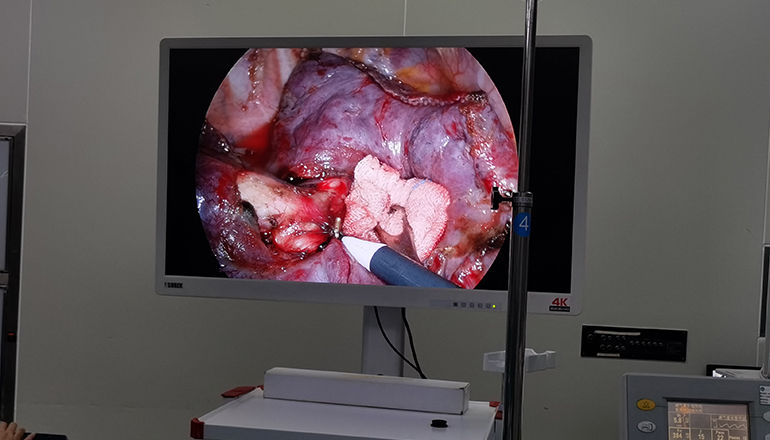- Shanghai, China
- [email protected]
- +86-21-58189111
Laparoscopic appendectomy is a minimally invasive surgical procedure used to remove an inflamed appendix. The appendix is a small, tube-like organ attached to the large intestine, and when it becomes inflamed, it can lead to a condition called appendicitis. Appendicitis is a medical emergency that requires immediate treatment, and laparoscopic appendectomy is one of the most commonly used surgical techniques to treat it.
The procedure involves making a few small incisions in the abdomen, through which the surgeon inserts a laparoscope (a thin, flexible tube with a camera and light) and other surgical instruments. The laparoscope allows the surgeon to see the inside of the abdomen and locate the inflamed appendix. The surgeon then cuts and removes the appendix using the surgical instruments. The incisions are then closed with sutures or surgical glue.
Laparoscopic appendectomy has several advantages over traditional open surgery, including smaller incisions, less bleeding, less pain, faster recovery time, and shorter hospital stays. The smaller incisions result in less scarring and reduced risk of infection. Laparoscopic appendectomy also allows for earlier return to normal activities, with most patients able to resume their normal activities within a week.

The success rate of laparoscopic appendectomy is high, with a low rate of complications. However, there are some risks associated with the procedure, including bleeding, infection, and injury to nearby organs. In rare cases, conversion to open surgery may be necessary if the surgeon encounters complications during the procedure.
Laparoscopic appendectomy is generally performed under general anesthesia and takes approximately 30 to 60 minutes to complete. It is a safe and effective procedure that can be performed on patients of all ages, including children.
In conclusion, laparoscopic appendectomy is a minimally invasive surgical technique used to remove an inflamed appendix. It has several advantages over traditional open surgery, including smaller incisions, less bleeding, less pain, faster recovery time, and shorter hospital stays. The procedure is safe and effective and is commonly used to treat appendicitis. If you suspect you may have appendicitis, it is important to seek medical attention immediately.
Delay in the diagnosis and treatment of appendicitis can lead to complications such as abscess formation, peritonitis, and sepsis. Therefore, it is essential to recognize the signs and symptoms of appendicitis, which include abdominal pain, nausea, vomiting, fever, and loss of appetite.
In some cases, laparoscopic appendectomy may not be suitable for patients with severe medical conditions or advanced age. Your surgeon will determine the most appropriate treatment plan based on your individual medical history and condition.
Overall, laparoscopic appendectomy is a safe and effective surgical technique that offers several benefits over traditional open surgery. If you require appendectomy, discuss the benefits and risks of laparoscopic surgery with your doctor to determine the most appropriate treatment plan for you.
Leave a Comments